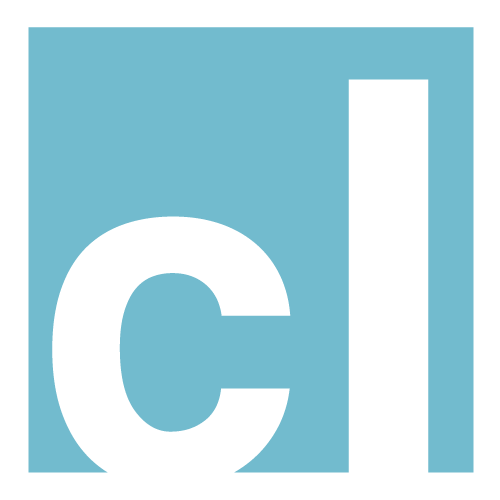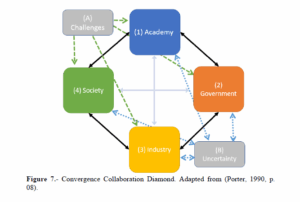Collaborating Toward Convergence Efforts for K-20 STEM Education
Colaborando hacia Esfuerzos de Convergencia para la Educación STEM K-20
By: James Lipuma & Cristo León
Blog post about the article by Lipuma & León (2022) published in the Journal of Systemics, Cybernetics and Informatics (JSCI), last updated on [October 08, 2025].
Introduction
This article examines how NSF’s Collaborative Infrastructure and the Convergence Research approach can address complex social innovation challenges. It draws from the authors’ experience in their NSF INCLUDES project (#1744490), providing conceptual and methodological clarity for multi-, inter-, and trans-disciplinary research. The authors propose practical frameworks for collaboration, including the Collaborative Convergence Pyramid and the Universal Model of Strategic Planning.
What Challenge Does the Article Address?
- The lack of shared terminology and understanding across multi-, inter-, and trans-disciplinary collaboration.
- The need for frameworks that align strategic planning, logic models, and convergence in STEM education.
- The difficulty of facilitating collaboration among diverse stakeholders within NSF-funded projects.
What Do We Offer?
The paper introduces conceptual and practical models to enhance convergence-oriented research:
- Availability, Interest, and Knowledge (AIK) Methodology for aligning vision, mission, and theory of change.
- Universal Model of Strategic Planning integrating business and research planning frameworks.
- Collaborative Convergence Pyramid as a framework for negotiating shared understanding and collective action.
Who Will Benefit from This Work?
- STEM education researchers and NSF project teams.
- University administrators building collaborative infrastructures.
- Policy designers interested in transdisciplinary and convergence research.
Download or View
Cite this Paper
Lipuma, J., & León, C. (2022). Collaborating Toward Convergence Efforts for K-20 STEM Education.
Journal of Systemics, Cybernetics and Informatics, 20(1), 351–389.
https://doi.org/10.54808/JSCI.20.01.351
DOI: 10.54808/JSCI.20.01.351
ISSN: 16904524
Volume: 20 | Issue: 1 | Pages: 351–389
Publisher: International Institute of Informatics and Cybernetics (IIIS)
Copyright: © All rights reserved. Systemics, Cybernetics, and Informatics, 2022.
Interested in Exploring or Collaborating?
Are you studying convergence, collaboration, or interdisciplinary research?
Would you like to apply these frameworks to your project?
Share this post, or cite the article to expand the transdisciplinary conversation.
Acknowledgments
We acknowledge support for Leadership and iSTEAM for Females in Elementary School (LiFE) and STEM for Success from the National Science Foundation under award number #1744490 and from Howmet Aerospace Foundation. Also, the work of our colleagues Bruce Bukiet (PI) and Nancy Stefen-Flurr (COPI). The authors would like to acknowledge the excellent work and support of Dr. Nagib Callaos. Support, vision, and insights on the inter-disciplinary research approach from Dr Kevin Belfield, Dean, College of Science and Liberal Arts at New Jersey Institute of Technology. NJ. USA.
Non-anonymous reviewers: Dr. John Wolf, Interim Program Director, Cyberpsychology, Assistant Dean, College of Science and Liberal Arts at New Jersey Institute of Technology. NJ. USA. For his support in reviewing this paper
Beta-Reader: Dr. Saikat Pal is the Director of the Computational Orthopaedics and Rehabilitation Engineering Laboratory and the Life Sciences Motion Capture Laboratory at NJIT. For his support as the beta-reader of this paper
Disclosure statement
No conflict of interest pertains to the research presented above.
Versión en Español
Colaborando hacia Esfuerzos de Convergencia para la Educación STEM K-20
Entrada de blog sobre el artículo de Lipuma y León (2022) publicado en el Journal of Systemics, Cybernetics and Informatics (JSCI).
Introducción
Este artículo analiza cómo el enfoque de Infraestructura Colaborativa y Convergencia en la Investigación de la NSF puede aplicarse a los desafíos sociales complejos en innovación educativa. Basado en la experiencia de los autores con el proyecto NSF INCLUDES (#1744490), se presentan marcos teóricos y metodológicos para la colaboración entre disciplinas.
¿Qué problema aborda el artículo?
- Falta de lenguaje y comprensión compartida en la investigación multi, inter y transdisciplinaria.
- Necesidad de integrar planificación estratégica y modelos lógicos en la educación STEM.
- Dificultad para facilitar colaboración entre múltiples actores dentro de proyectos de la NSF.
¿Qué aportamos?
- Metodología AIK (Disponibilidad, Interés y Conocimiento) para alinear visión, misión y teoría del cambio.
- Modelo Universal de Planificación Estratégica que integra conceptos empresariales y de investigación.
- Pirámide de Convergencia Colaborativa para negociar comprensión común y acción colectiva.
¿A quién le sirve este trabajo?
- Investigadores en educación STEM y equipos de proyectos de la NSF.
- Administradores universitarios que construyen infraestructura colaborativa.
- Diseñadores de políticas interesados en investigación transdisciplinaria.
Cita el artículo
Lipuma, J., & León, C. (2022). Collaborating Toward Convergence Efforts for K-20 STEM Education.
Journal of Systemics, Cybernetics and Informatics, 20(1), 351–389.
https://doi.org/10.54808/JSCI.20.01.351
¿Te interesa profundizar o colaborar?
¿Estás trabajando en proyectos de convergencia o investigación interdisciplinaria?
¿Te gustaría adaptar estos marcos a tu contexto institucional?
Comparte esta entrada o cita el artículo para fortalecer esta conversación transdisciplinaria.
Podcast
🎧 Escucha el podcast sobre el artículo (duración: 5:28 minutos)

